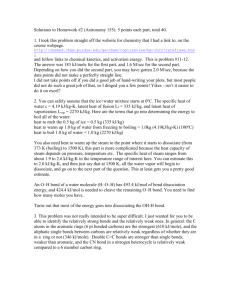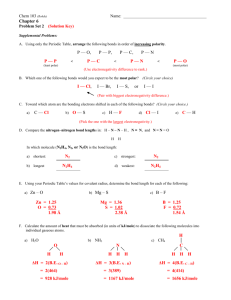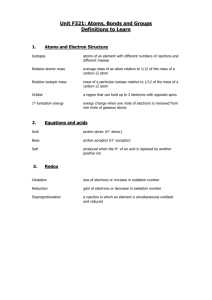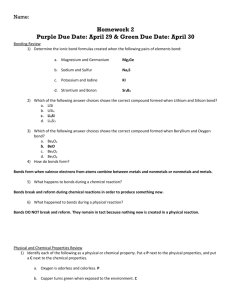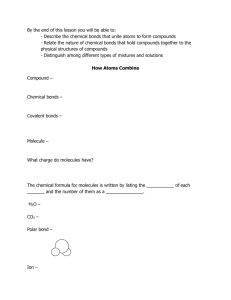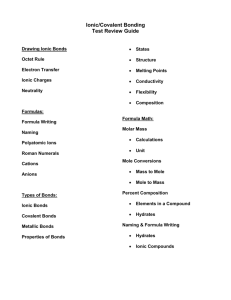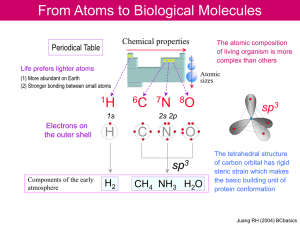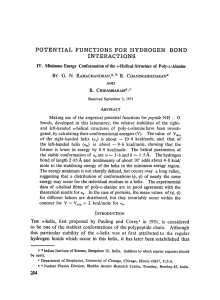Lecture 10
advertisement
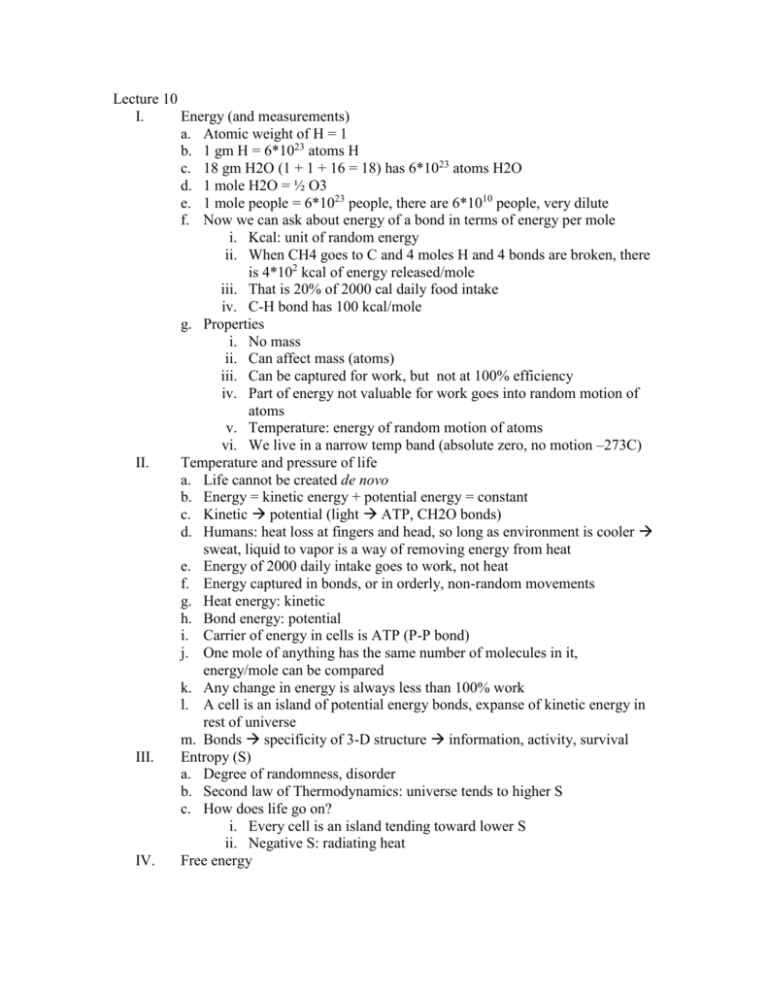
Lecture 10 I. Energy (and measurements) a. Atomic weight of H = 1 b. 1 gm H = 6*1023 atoms H c. 18 gm H2O (1 + 1 + 16 = 18) has 6*1023 atoms H2O d. 1 mole H2O = ½ O3 e. 1 mole people = 6*1023 people, there are 6*1010 people, very dilute f. Now we can ask about energy of a bond in terms of energy per mole i. Kcal: unit of random energy ii. When CH4 goes to C and 4 moles H and 4 bonds are broken, there is 4*102 kcal of energy released/mole iii. That is 20% of 2000 cal daily food intake iv. C-H bond has 100 kcal/mole g. Properties i. No mass ii. Can affect mass (atoms) iii. Can be captured for work, but not at 100% efficiency iv. Part of energy not valuable for work goes into random motion of atoms v. Temperature: energy of random motion of atoms vi. We live in a narrow temp band (absolute zero, no motion –273C) II. Temperature and pressure of life a. Life cannot be created de novo b. Energy = kinetic energy + potential energy = constant c. Kinetic potential (light ATP, CH2O bonds) d. Humans: heat loss at fingers and head, so long as environment is cooler sweat, liquid to vapor is a way of removing energy from heat e. Energy of 2000 daily intake goes to work, not heat f. Energy captured in bonds, or in orderly, non-random movements g. Heat energy: kinetic h. Bond energy: potential i. Carrier of energy in cells is ATP (P-P bond) j. One mole of anything has the same number of molecules in it, energy/mole can be compared k. Any change in energy is always less than 100% work l. A cell is an island of potential energy bonds, expanse of kinetic energy in rest of universe m. Bonds specificity of 3-D structure information, activity, survival III. Entropy (S) a. Degree of randomness, disorder b. Second law of Thermodynamics: universe tends to higher S c. How does life go on? i. Every cell is an island tending toward lower S ii. Negative S: radiating heat IV. Free energy a. From second law, we can look at a bond shift and ask not just total energy but what energy is available to do work b. Energy to do work is the potential energy in bonds c. G = H – ST (equation discussed further in class) d. If the change in G is <0, free energy decreases, and a reaction will go spontaneously e. If the change in G is >0, free energy releases, then energy must be added to get the reaction to go f. Why should G change in reactions? i. Bond is shared electrons ii. Electrons can be bound with + or – energy to nucleus iii. The tighter the bond of electrons to nucleus, greater the energy necessary to break it iv. Also, when bonds are broken, one molecule goes to two molecules, and there is more disorder v. Exergonic: -G, spontaneous vi. Endergonic: +G, needs outside energy g. Why don’t all exergonic reactions occur spontaneously? i. They need activation energy ii. Examples in class
